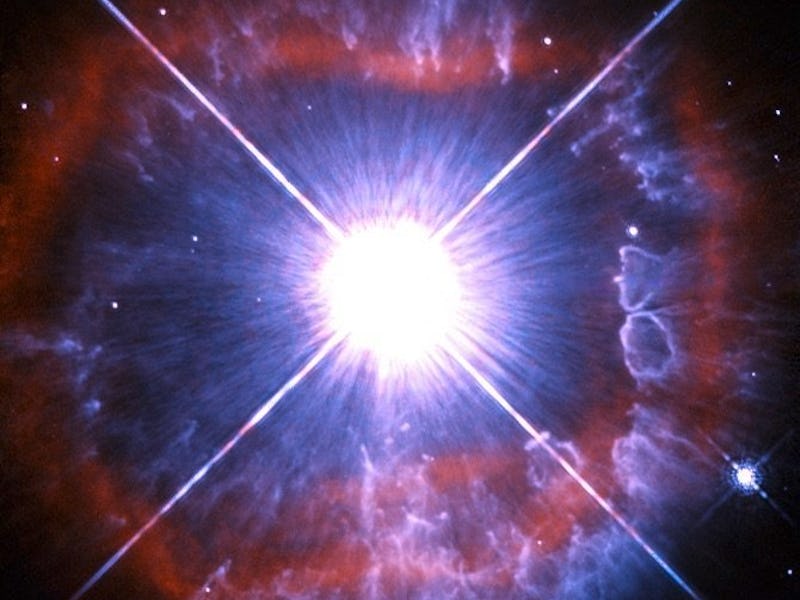A little thing in outer space known as AG Carinae is one of the brightest objects ever observed. That’s saying a lot for a universe that has about one billion trillion stars and counting. But this particular star is so bright, scientists can’t even visualize it. The extreme glare coming from this Hubble Space Telescope image completely shrouds the star itself — a small pinpoint compared to the monstrous light it gives off. The criss-cross pattern is also just a glare-like effect caused by the telescope.
AG Carinae is one of the brightest objects in the universe.
The star is classified as a luminous blue variable star — the equivalent of being on the varsity team for star brightness competitions. There are about twenty known LBVs in the universe, one of which is also located in the constellation Carina along with AG. Though scientists are still unraveling the mysteries of variable stars, they do know that the powerful light signifies the beginning of the end for this blue supergiant.
In a process of decay, AG Carinae has already shed 15 times the mass of the sun in a massive outburst of stellar material about 10,000 years ago, which has formed a beautiful celestial ring around the star. The cavity between the gaseous ring and the star itself is void. Scientists think this is because strong pressurized winds moving at almost five million miles an hour are keeping the dust at bay.
For AG Carinae, the end is nigh. In a few million years it will reach supernova stage and burst into one of the brightest explosions the Milky Way has ever seen.
